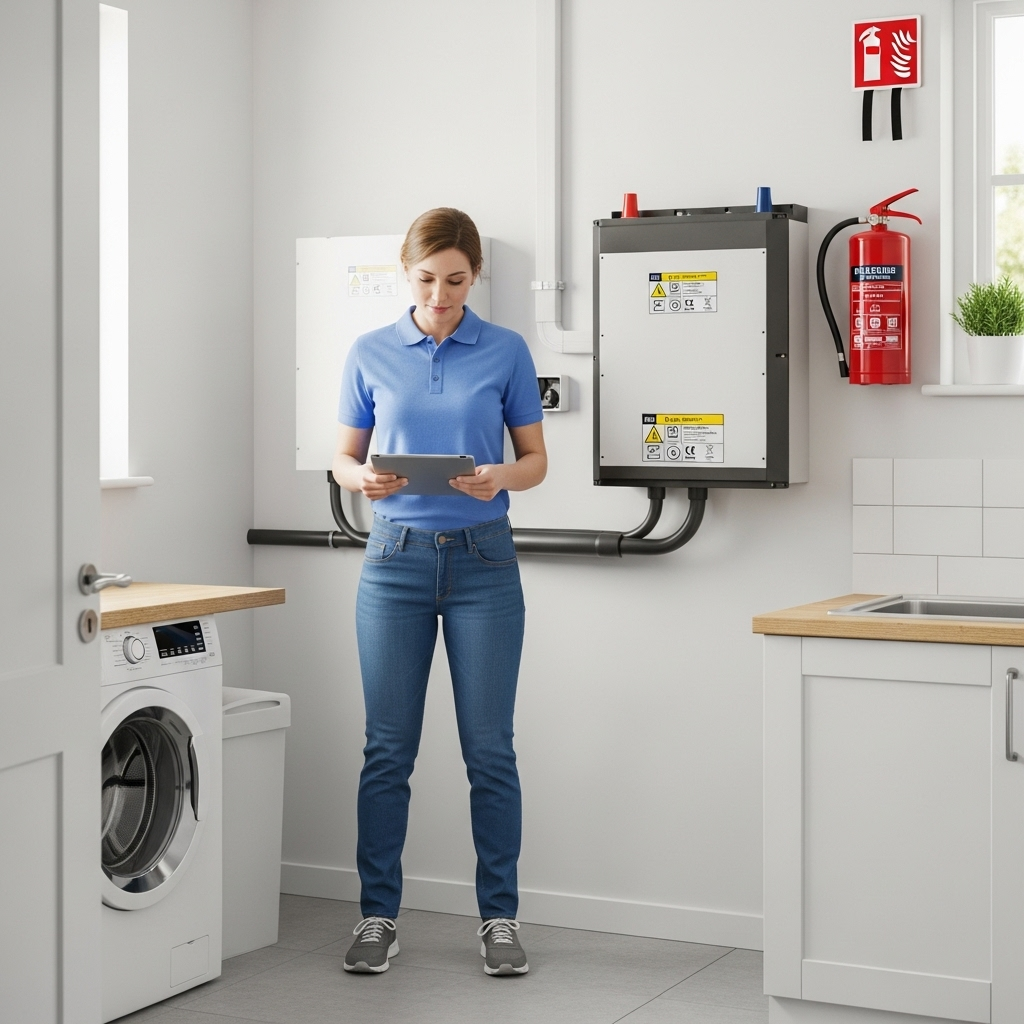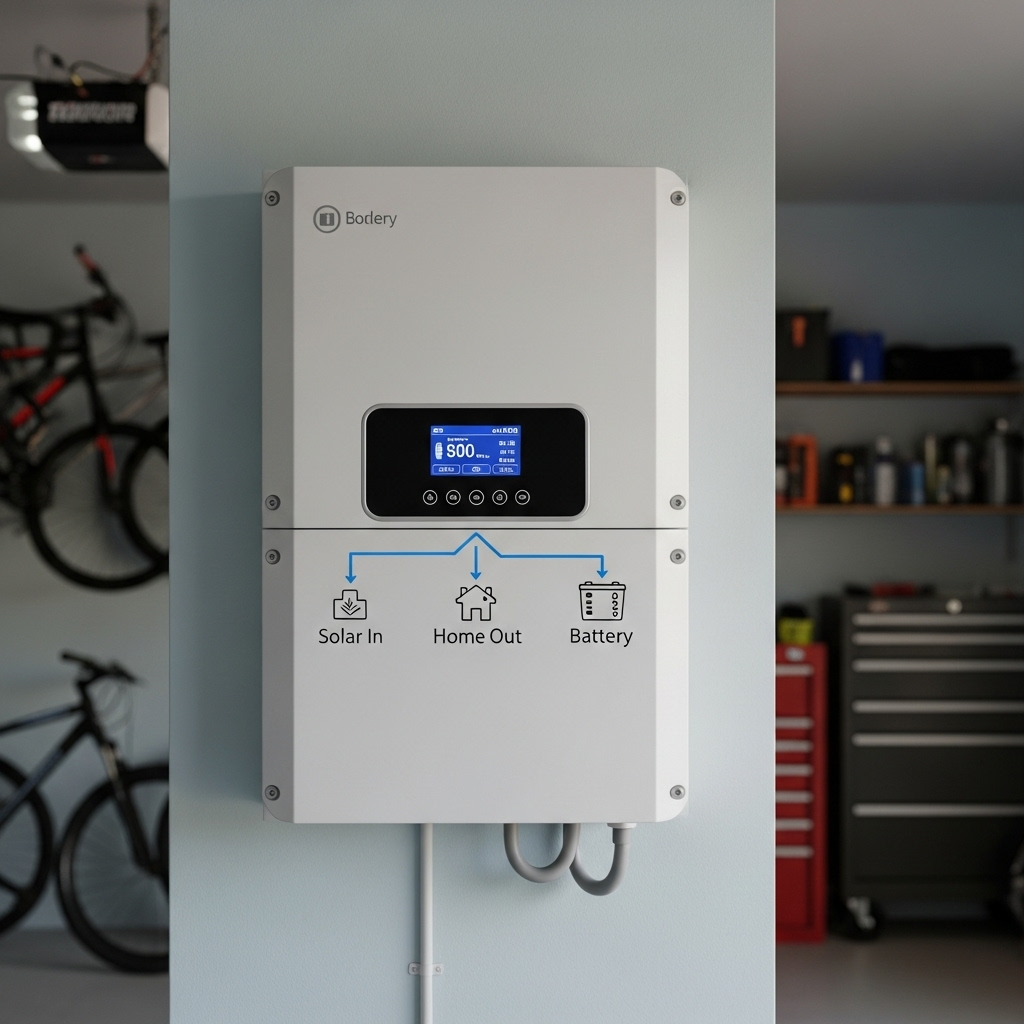Severe weather can disrupt the grid, but it doesn't have to disrupt your life. A home energy storage system (ESS) provides a powerful layer of resilience, keeping your lights on and essential devices running. Proper preparation is key to maximizing its effectiveness. This homeowner maintenance checklist offers a structured approach to prepare your system before a storm, manage it during an outage, and restore it afterward, ensuring you get the most from your investment in energy independence.
Pre-Storm Preparations: Fortifying Your Energy Independence
Proactive steps taken before a storm arrives are critical for ensuring your system performs when you need it most. This phase is about charging, inspecting, and planning.
Charge and Configure Your System
Your first priority is to ensure your battery has the maximum amount of stored energy. Charge your ESS to 100% capacity. Many modern systems feature a 'storm mode' or 'backup-only' setting. Activating this tells the system to prioritize charging and retaining energy rather than using it for daily self-consumption. You should also verify that your Depth of Discharge (DoD) settings are configured to allow for maximum use of your stored capacity during an emergency.
Inspect Physical Components
A physical inspection helps identify vulnerabilities. Check that your solar panels and the ESS unit are securely mounted and can withstand high winds. Ensure all external casings and conduit are properly sealed to prevent water ingress. It's also wise to clear any loose debris, such as branches or outdoor furniture, from the area around your panels and outdoor equipment to prevent impact damage.
Review Your Critical Load Plan
Knowing what you need to power is as important as having the power itself. Identify your home's critical loads—devices like refrigerators, medical equipment, well pumps, and a few lights and outlets for communication devices. Understanding the power consumption of these items helps you calculate your system's expected runtime. For a deeper look into the metrics that define battery performance, you can review this comprehensive reference on solar storage performance. This knowledge allows you to manage expectations and conserve energy effectively.
| Appliance | Typical Power (Watts) | Estimated Daily Use (Hours) | Energy Consumption (kWh) |
|---|---|---|---|
| Refrigerator | 200 | 8 (cycling) | 1.6 |
| CPAP Machine | 60 | 8 | 0.48 |
| LED Lights (5 bulbs) | 50 | 6 | 0.3 |
| Internet Modem/Router | 15 | 24 | 0.36 |
| Phone Charging | 10 | 4 | 0.04 |
During the Outage: Managing Your Power Reserves
Once the power goes out, your focus shifts from preparation to active management. Careful monitoring and conservation will extend your energy autonomy.
Monitor System Performance Actively
Use your system’s mobile or web application to keep a close eye on its status. Track the battery's state of charge, the current electrical load you are placing on it, and any incoming solar generation. According to the International Energy Agency's report, Next Generation Wind and Solar Power, real-time data is fundamental to effectively managing renewable energy resources. Pay attention to any alerts or fault codes, as they can provide early warnings of potential issues.
Conserve Energy Strategically
The less energy you use, the longer your battery will last. Turn off all non-essential lights and appliances. Use high-draw devices, like microwaves, for very short periods. If you have solar panels, try to shift any larger energy tasks to daylight hours when the battery might be recharging. This simple discipline can add hours, or even days, to your backup power supply.
Prioritize Safety
Your safety and the system's integrity are paramount. Keep the area around your ESS unit and inverter clear and dry. Never attempt to open or service any components during a storm. If you hear unusual sounds like buzzing or clicking, or notice any overheating, contact your installer for guidance once it is safe to do so.
Post-Outage Recovery: Restoring Normal Operations
After the storm has passed and grid power is stable, a few final steps will ensure your ESS is ready for normal operation and prepared for the next event.
Conduct a Thorough System Inspection
Once it is safe, perform a detailed visual inspection of your entire system. Look for any signs of damage to solar panels, such as cracks or shifting. Check the battery unit and inverter for any signs of water ingress, physical damage, or loose connections. Documenting any potential issues with photos can be helpful for insurance claims or technician visits.
Recharge and Re-evaluate
Allow your system to fully recharge from solar or the grid. Take note of how the system performed during the outage. Did it support your critical loads as expected? How long did the battery last? This real-world data is invaluable. As noted in the Electricity Storage Valuation Framework by IRENA, assessing performance in real-world scenarios is key to understanding the true value of an energy storage asset. Use these insights to adjust your critical load plan for future outages.
Reset to Normal Operating Mode
Finally, switch your ESS from its storm or backup setting back to its normal operating mode (e.g., self-consumption or time-of-use). This will allow it to resume its daily function of optimizing your energy usage and reducing your electricity bills. Check for any available firmware updates from the manufacturer to ensure your system is running with the latest performance and security enhancements.
A Forward-Looking Approach to Energy Security
An energy storage system is a cornerstone of modern home resilience. By following a structured checklist for storm readiness, you transform a piece of hardware into a reliable source of power and peace of mind. This proactive approach ensures your system is prepared to function flawlessly when external conditions are at their worst. The U.S. Department of Energy emphasizes that pairing solar with storage is a key strategy for strengthening energy resilience against disruptions. This preparation, combined with routine maintenance, protects your investment and secures your energy independence for years to come.
Frequently Asked Questions
How long can my ESS power my home during an outage?
The duration depends on three main factors: the usable capacity of your battery (measured in kilowatt-hours, or kWh), the total power draw of the appliances you run (your 'load'), and any power being generated by your solar panels. To estimate, divide the battery's capacity by your average load. For example, a 10 kWh battery powering a constant 0.5 kW load would last approximately 20 hours.
Can my solar panels recharge my battery during a storm-related outage?
Yes, in most modern solar-plus-storage systems. This capability, known as 'islanding,' allows your solar array to continue generating power and recharging your battery even when the grid is down. However, solar production will be significantly reduced during heavy cloud cover, rain, or if the panels are covered in debris.
What is a 'storm mode' on an energy storage system?
Storm mode is a special setting that overrides the system's normal, day-to-day operating logic. When activated, it forces the battery to charge to its maximum capacity from solar or the grid and then hold that charge. It stops the system from discharging to power your home for self-consumption, preserving a full battery for an anticipated power outage.





Leave a comment
All comments are moderated before being published.
This site is protected by hCaptcha and the hCaptcha Privacy Policy and Terms of Service apply.